In my previous piece we talked about how great the Pima Air & Space Museum in Tucson was, and how much of an AvGeek dream it is to walk around. However Pima isn’t the only reason AvGeek’s want to come to Tucson; they also come for the Boneyard.
The Boneyard, or the 309th Aerospace Maintenance And Regeneration Group (AMARG) as it is officially known, belongs to the United States Air Force and is part of Davis Monthan Air Force Base (although technically next door). Most of the aircraft at AMARG have come from the armed forces of the United States. The Army, Navy, Air Force, Marine Corps, and Coast Guard all send their equipment here once it has reached the end of its service life. Some countries, such as Norway, send their military aircraft to AMARG for what this facility does best – storing military aircraft. Before we talk about how you can visit AMARG, we need to talk first about what they do.
The boneyard dates all the way back to after the second world war. It was started as part of the Army Air Force as a facility to store excess B-29s and C-47s (DC-3s) after the war. Tucson was picked as the location because it holds a perfect climate for storage of aircraft, and has nice hard ground. Why is hard ground necessary? Well, because by having hard ground they don’t have to pave all the area – less cost and less hassle when you can just tow any aircraft across the ground that is already there.
In 1965, the Department of Defense decided that by combining the Air Force’s storage facility with that of the Navy, Marine Corps, and Coast Guard (located in Goodyear, Arizona) they could save money and have one centralized location. The combined facility became the Military Aircraft Storage & Disposition Center (MASDC). Long names getting to you yet? Too bad, there are still more to go.
Fast forward to the 1980s, and Department of Defense decided to move dismantling of intercontinental ballistic missiles (ICBMs) to Tucson, changing the name again to help show that more than just aircraft are stored there. The facility became Aerospace Maintenance & Regeneration Center. But that’s not the last change that happened. In 2007 the US Air Force did some shuffling and renamed the facility to its present day title, AMARG (swapping the Center for Group). That’s a lot of name swaps!
Planes don’t just come to AMARG to die at the hands of a scrapper; the government wants to recoup some money. Apparently for every $1 spent on storing the aircraft, the government makes $11 out of AMARG’s true purpose, and what makes up the R in AMARG, Regeneration. This happens by taking the planes and either repurposing them for other uses (some fighters are being turned into drones) or scrapping them out for parts. The Air Force might need a part for a B-52 – well no need to worry, because all of the aircraft in the Boneyard are stored so that they can be brought back to life, or salvaged for parts. That’s why the aircraft are protected by coverings and coatings when they arrive; by doing that they can be kept in the dry Arizona air and not lose quality or function. AMARG staff can head out into the boneyard to scavenge a particular part, or could tow an aircraft in to be made ready to be flown out. This is a daily occurrence and you will often see aircraft in different states of repair, from newly-arrived to long-resting in the boneyard.
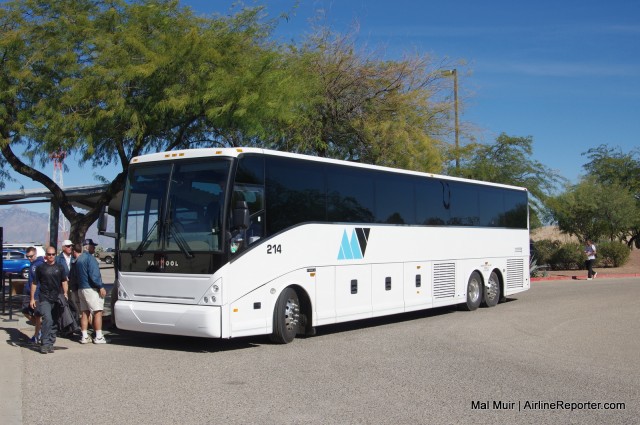
Being onboard a bus just like this in AMARG does mean that you will get a good view from those windows
Want to visit the Boneyard? Well, you are in luck because you can! Tours can be taken from Pima and they only cost an additional $7 each, but they do have some conditions. You need to have a valid government ID on you (it is an active Air Force base, remember), you can’t take any bags with you – but that is ok, because you are not allowed off the bus. Yep, no getting off to wander amongst the planes, engines, and other fun stuff. However, you can take cameras with you so that you can take whatever photos you want (apart from base security, they don’t like that). The coaches are nice and comfortable and have very large windows that don’t cause too many hassles (as you can see – all of the photos in this post were taken from inside the bus and they turned out pretty well). The tours take from 75 to 90 minutes and are guided by Pima volunteers, who have generally spent some time in the armed forces, so they know their stuff.
As you go into the base you will do a brief drive around of some of the closer areas to the entrance (the AMARG entrance is only a few minutes away from Pima) before heading towards ’œHollywood Row’. Hollywood Row is about a mile-long stretch of road, lined on both sides with examples of the inhabitants of the boneyard. Why do this? Well AMARG is quite large, around 2,600 acres to be exact? Do you think realistically you are going to see even a fraction of that in just over an hour? So this mile-long stretch is full of all the goodies you want to see, all condensed down so that you don’t miss out.
My favorite thing on Hollywood Row? Well that would be my first glimpse of the YC-14, the aircraft that lost to the C-17 Globemaster III. No matter what kind of military aircraft you like, you won’t be disappointed.
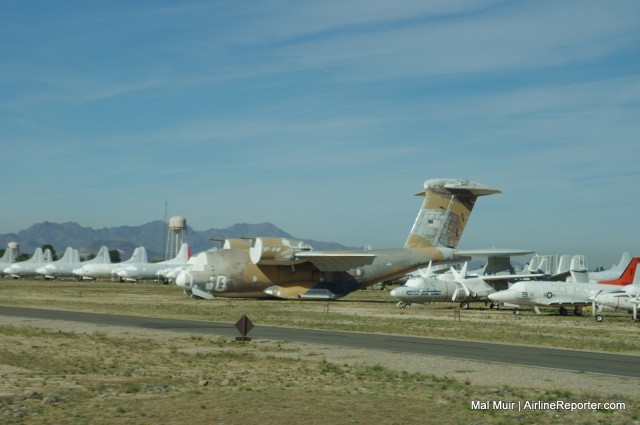
The Boeing YC-14, a plane that would lose its bid to an aircraft that would end up being made by Boeing anyway
Although you can’t step off the bus onto the ground at the base, the AMARG tour from Pima is well worth the extra $7. Pima is already one of the largest aviation museums in the world, and then to add on the expansiveness of AMARG, it makes for a killer combination.
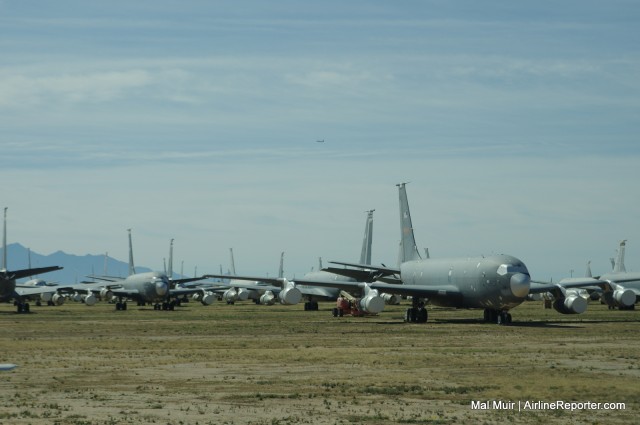
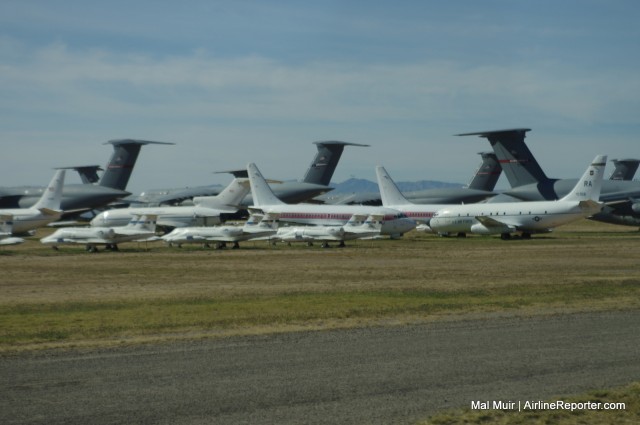
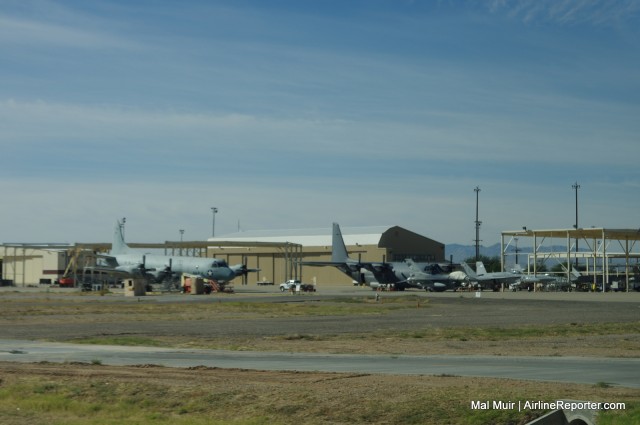
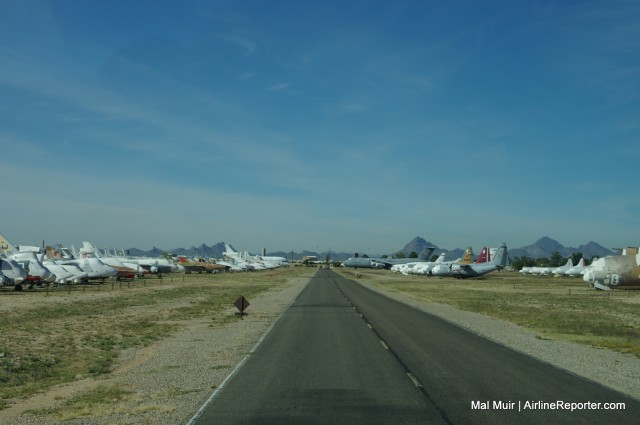
I will never forget the first time that I went to the Boneyard. I was about 10 years old and my dad took me out to visit a friend that worked there. At the time they had just received all of the B-52s that are now laying in pieces in the area. It was incredible to see mile after mile of those huge planes.
It truly is an amazing experience to go there.
No “picture” of the stealth fighter?
I do have some and thought I had put them in a gallery at the end of the piece. I will fix that up later today 😀
Great piece, Mal. I made it down to Pima a few years ago but ran out of time and didn’t get to visit the bone yard. Glad to hear it’s worth the trip, still very much on my to-do list.